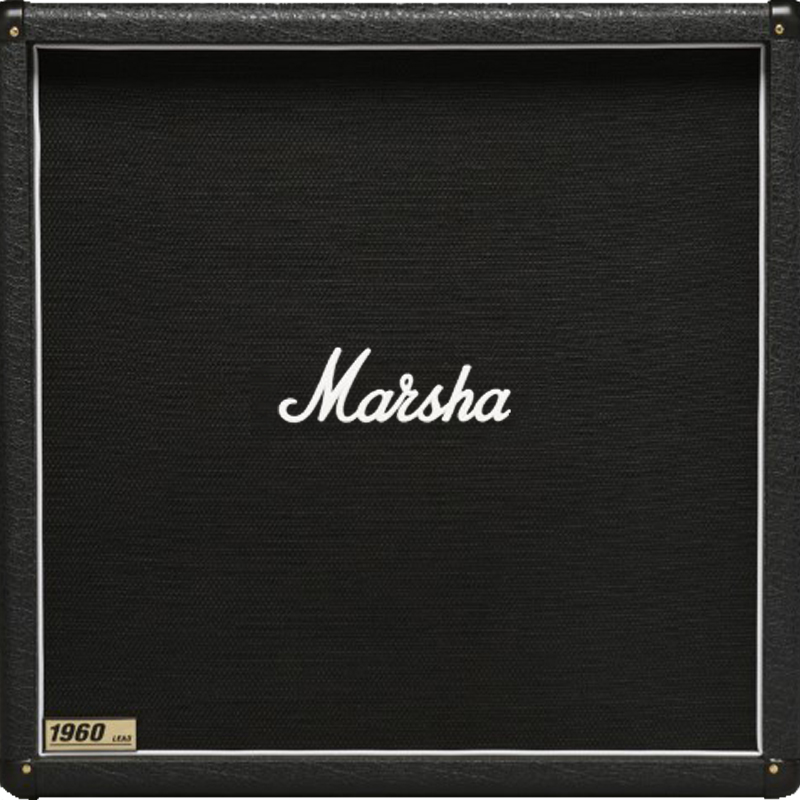Marshall JCM800 1960B Guitar Cabinet
Cabinet of the mega-hit amplifier JCM-800
Marshall’s most famous brand of guitar amplifiers has been loved by many guitarists, and the JCM-800, one of Marshall’s mega-hit amps, was a model designed differently from previous Marshall guitar amps. The JCM-800’s cabinet was designed specifically for the JCM-800 and, like the amp head, has supported a variety of great performances.
Marshall JCM800 1960B introduction
The UK’s Marshall is considered on par with the famous American brand, Fender. The founder, Jim Marshall, was once a musician himself, and later established the Marshall Shop as a retail store. Originally, the store specialized in drums, but as the number of customers increased, the store began to specialize in the maintenance of guitar amplifiers. The guitar amps of the time were prone to breakdowns, so he decided to build his own amp, the Marshall JTM-45, based on the Fender Bassman circuit, and it was the beginning of the Marshall brand.
In the 1960s, before the establishment of live stage PA systems as we know them today, the role of instrument amplifiers was to amplify the sound of instruments on stage. Therefore, the four-cabinet stack was designed to increase the output of amplifiers and speaker cabinets so that the sound would travel farther.
After the introduction of the Marshall brand, the 1959/100W amp and 1987/50W amp were introduced, which were quickly adopted by British and American guitarists and can be heard on many stages and classic recordings. The amp had four inputs, one for each of the Treble and Normal channels, and the need for more gain led to the use of patch cables to link the two inputs together (channel linking).
Then, in 1981, came Marshall’s biggest hit the JCM800. Because of the transition from the 1959 to 1987 models, a so-called transitional period, there were several models of the JCM800. Characterized by its circuit board, the JCM800 was later subdivided into the 2203, 2204, 2205, and 2210 models. Also, at that time, the PA at the live stage had already evolved and there was no problem as long as the instrument was producing a certain volume, so Master Volume came to be attached to the amplifier from this time.
When the JCM800 was in its infancy, guitarists were seeking more gain and were creating their own signature sounds by boosting with pedal effects pedals and using high-power pickups. The JCM900, the successor to the JCM800, was introduced by Marshall with a gain-boosting circuit in the first stage, allowing for a gain-boosted sound without the use of pedals.
In 2000, the JCM-2000 DSL/TSL, which had been improved to meet the needs of today’s music scene, was reintroduced as the JVM of the VintageModern series. The 1959HW is a hand-wired reissue of a classic model, as reissued models and products with a stronger vintage flavor are quite popular.
Marshall is considered a founding father of guitar amps, and many new brands were created by various engineers based on Marshall’s work. Marshall is a giant in the guitar amp world, and has made music history with some of the greatest musicians.
The 1960 cabinet is probably the most well-known cabinet produced by Marshall. 1960 cabinets come in two types: A-cavity (slanted) and B-cavity (straight). As you may know, in the slanted cabinet, the bottom two shots are mounted parallel to the baffle plate, but the top two shots are slanted upward. This allows the sound of the guitar amp to come through to the player’s ears when the guitarist is generally playing a few meters away from the cabinet, so it also serves as a monitor. As the name implies, all four straight amps are mounted vertically on the baffle plate. The A-cabinet is placed on the top, the B-cabinet on the bottom, and an amp head on the top to make an 8-amp cabinet. This idea was born before the PA system was established, but it has since become a symbol of rock and roll, with countless cabinets seen on stage.

Dynax CAB IR
DYNAX IR is the ultimate impulse response, created with a focus on how to reproduce a realistic cabinet. DYNAX IR has a lower latency than most IRs, providing a highly responsive and realistic sound.
Dynax CAB IR Introduction
also you can check Sound sample each Guitar Cabiner models on DYNAX IR LIST page.
DYNAX IR LIST Page
we will post latest DYNAX IR news to our Official Instagram.
Please follow us.
DYANX & Theone Official Instagram

